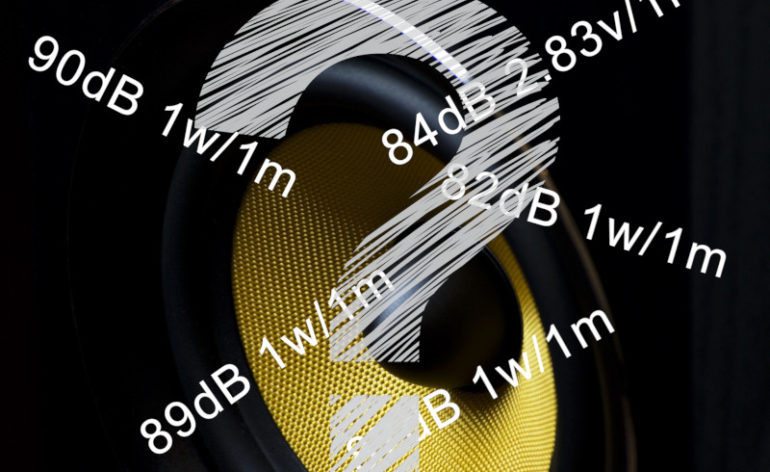Speakers with Different Sensitivity Ratings – Problems and Solutions
When you start shopping for speakers, you may come across claims about how easy or hard a speaker is to drive. This refers to the speakers’ sensitivity. Speakers have different sensitivities which are indicated by a dB rating into either one watt or 2.83 volts. If the speaker’s impedance is 8ohms nominal, then 1 watt is the same as 2.83 volts. That said, the higher the dB rating, the more “sensitive” the speaker. A very sensitive speaker can get louder with less power than a less sensitive speaker. But what does this mean for you? Let’s discuss.
What Do the Different Speaker Sensitivity Ratings Mean?
Sensitivity ratings for speakers mostly vary from the low 80’s to high 90’s. So, it would look like 87dB 1w/1m or 93dB 2.83v/1m. This means that when the speaker is fed either one watt or 2.84 volts, it can output the rated volume. A higher number means that the speaker gets louder with the same power.
That said, whenever you see 2.83 volts instead of 1 watt, you should get suspicious. If the speaker is 8 ohms nominal, one watt and 2.83 volts are the same. But if the speaker is 4 ohms nominal, it actually means that 2.83 volts is 2 watts. If you see this, subtract 3dB from the rated sensitivity. This will allow you to compare speakers accurately.

What to Do if Your Speakers have Different Sensitivity Ratings
Most of us didn’t start off buying a full set of home theater speakers. Instead, we cobbled together a mix of speakers we were gifted, found on sale, or just handed down. These speakers can have a wide range of sensitivity ratings. Generally speaking, this shouldn’t be a problem. In most setups, your receiver will adjust for the different sensitivity ratings by increasing or decreasing the speaker trim levels.
Trim levels are determined during the automatic setup system (or by you if you self-calibrate your system). A more sensitive speaker will have lower trim levels than a less sensitive speaker. This is normal and shouldn’t be a problem. But it can be.
Warning Signs that Low Sensitivity Speakers may be a Problem
When you have speakers with low sensitivity ratings, you may want to look out for these warning signs:
- Distance from speaker to listening area greater than 15 feet
- Amplifier/Receiver getting overly hot
- Having to turn up the volume very high
- Trim levels set to max (usually +12dB or +10dB)
Fixing Low Sensitivity Speaker
There are a couple of potential “solutions” to owning speakers that have a low sensitivity rating. If they are situated far away, you can move them closer. The closer they are, the less power they will need to achieve the same volume. This should alleviate all the above warning signs. If you can’t move them, and you still need to use them, you’ll need to get an external amplifier.
The external amplifier takes the job of powering the speaker away from the receiver. External amps generally have more power per channel, bigger power supplies, and a lot more capacitors. They are built to deal with speakers with low sensitivity ratings and impedances. An external amp will be able to provide all the power your low sensitivity speakers need to hit the volume level you want.
Do you have low sensitivity speakers? Did they cause you any problems? Let us know in the comments or on our Facebook page.


